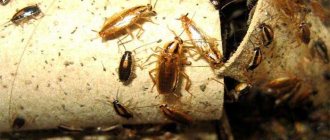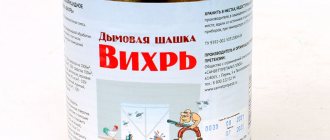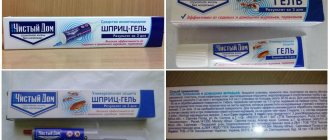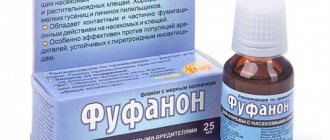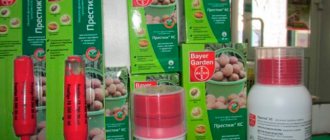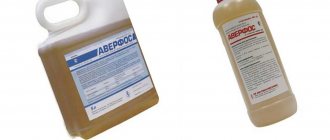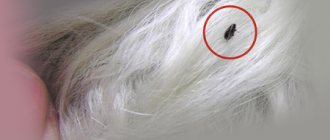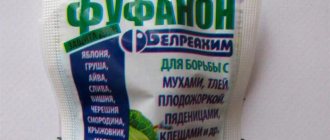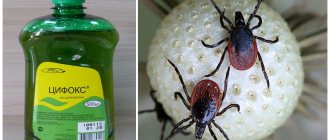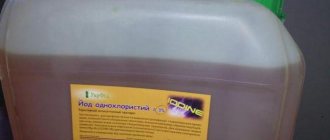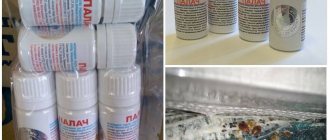The mole cricket is an insect whose presence in a suburban area leads to crop losses. The uninvited guest destroys not only seeds, but also ripe root crops. The roots of plants, including ornamental ones, are also susceptible to attack by the pest. Various chemicals are used to kill insects. The drug Rubit differs from Medvedka in its high efficiency and safety in relation to humans.
Peculiarities
In terms of its properties, Rubit Rofatox is similar to the drug Regent 800.
The active ingredient in both products is fipronil, which has a nerve-paralytic effect on mole crickets and other insects. After the insect tastes this deadly delicacy, the nervous system of the pests is blocked. They lose the ability to move and feed and die after three hours. Yes, for a mole cricket or a wireworm, “Rubit” is really delicious.
Gardeners also use this remedy for the Colorado potato beetle. To attract pests, the drug contains flavorings and flavoring additives.
How to make a trap for a mole cricket with your own hands
It’s worth saying a few words about rubit granules. They are produced in brown and green colors. Insects mistake brown balls for plant roots, and green balls for foliage, and greedily pounce on them.
The destructive effect on pests lasts two weeks, after which the granules become completely safe for them. The decomposition of the bait, as the instructions for use indicate, does not harm the soil.
The drug "Prestige" - instructions for use
Prestige is an effective remedy for wireworms, sold in convenient bottles of 15 and 60 ml in concentrated form for subsequent dilution in water. The drug is produced in Germany and comes complete with a convenient measuring cap.
Acting according to the instructions, Prestige must be diluted with water and treated with plants. It is important that the principle of processing seedlings and tubers differs. Tubers are protected from the pest by applying the drug before or during planting. Before planting, potatoes are sprayed evenly, allowed to dry, and then placed in prepared holes.
The drug is effective for 40 days, protecting tubers and tops. After the specified period, the product disintegrates without harming the new crop.
To protect the seedlings, their rhizomes are soaked in a solution of the drug for 8 hours, after which they are planted in the soil. The product will protect plants for 30 days.
It should be understood that processing potatoes with Prestige has both advantages and disadvantages. The disadvantages include:
- small, but the effect on the yield of the drug;
- high cost.
The advantages of the product are:
- in high efficiency of action;
- in a gentle effect on plants;
- associated extermination of a number of other pests and fungi;
- stimulation of plant growth.
You should work with the drug in compliance with safety measures, strictly following the recommendations for obtaining the required concentration of the solution based on the available volume of products for processing.
What plants does wireworm damage?
The wireworm is not a species of insect, but a click beetle larva. The beetles themselves do not cause much harm - they feed on the leaves of cereals. But their females lay up to 100 eggs over the summer, from which a serious enemy of potato plantations emerges - the wireworm.
The larva is a long-liver among insects: if there is food, it can live in the ground for up to 5 years, eating crops. It is difficult to physically destroy a wireworm - it lives underground, breaking through winding passages through which it quickly escapes from the threat.
click beetle and larva (wireworm) enemy of the gardener
2-4 year old individuals are considered dangerous. These wireworms are easily recognized by their clearly segmented body (which makes them look like a worm) with many legs. The length of the larva is 2-3 cm. The color varies from yellow-chestnut to dark brown.
Adult worms have a very thick chitinous shell. It is almost impossible to crush an insect - if you catch a pest, it is easier to tear it apart, cut it into two parts. Although potatoes are considered its favorite food, the wireworm does not disdain almost anything:
- Corn, tomatoes, beets, carrots, onions, cabbage.
- A plant at any stage of development: from seed to fruiting stage, dying.
- Any parts of plantings: root system, fruits, stems, leaves.
The cunning of the pest is that it tolerates wintering well in frozen ground. If you do not control the wireworm this year, the larva will continue to destroy plantings in future seasons.
Provotox - how to use, effect
To remove wireworms from a potato field or summer cottage, you can use the proven product Provotox. We are talking about a special insecticide designed specifically to combat wireworms and nothing else. The product shows one of the highest results precisely due to its narrow focus.
It produces the drug and is sold in convenient packages of 40 and 120 grams. The action of the drug is aimed at damaging the insect's nervous system.
Compared to analogues, the drug is more affordable, but not as toxic and dangerous to humans. In addition, what is important is that it does not cause addiction to the pest. Insecticides such as Provotox against wireworms should be used once, distributing the granules over the surface of the soil. When eating the bait, insects receive a blow to the intestines, their nervous system ceases to function normally, and paralysis occurs. The result is inevitable death.
The advantages of the product include its non-toxicity, third class of hazard, and removal from the soil over time.
An important point is that Provotox, after mixing with soil, does not move down the profile, polluting groundwater.
How to identify a wireworm
I wrote that the garden pest prefers to live in the ground, feeding on root crops, which makes it difficult to meet it “face to face.” You can tell if there are wireworms in your area by the following characteristic signs:
- In tubers and root vegetables there are black dots, spots, narrow winding passages.
- Only individual bushes are damaged, and not the whole ridge or plantation. Wireworms can dig a vertical passage up to 1-2 m. But it is difficult to move in the horizontal direction - a maximum of 20-30 cm. Therefore, they prefer to feed on 1-2 neighboring plants.
- During the period of pest activity, it is possible to detect when digging up a garden in the upper layers of the soil.
Another sign is the appearance of adult click beetles. Outwardly, they are almost indistinguishable from useful ground beetles. However, the pest, turning over from its back to its abdomen, makes a clicking sound.
Potassium permanganate for wireworm
It is worth knowing how you can use potassium permanganate against wireworms. If root crops or potatoes grow in soil with a neutral or alkaline reaction, then it is recommended to treat the prepared holes immediately before planting with a solution of manganese potassium (5 grams per bucket of water).
0.5 liters of solution is taken per well. If the soil is acidic, then the result of using such a solution may be that the roots of the seedlings will burn. Therefore, it is recommended to pour a handful of pine needles or onion peels into holes made in acidic soil.
Photo of potassium permanganate
What is Rubit
Rubit is a Russian-made insecticide, available in several varieties. It is used to combat insects that damage gardenings and other species, including cockroaches and other household parasites. If we consider Rubit against mole crickets and wireworms, then this substance is not such a newcomer to the agricultural chemicals market. In 2014, farmers became acquainted with the drug Rubit Phenaxin; it was produced in packages of various weights containing red and green granules. As the producers explained, the red poison was eaten by young individuals, as it resembles parts of the root system, and the green particles were preferred by adult mole crickets, mistaking them for the above-ground part of plants.
Such advertising support for an insecticide intended for a soil-dwelling pest looks quite funny. This pest spends most of its time underground, in complete darkness, and for it it doesn’t really matter what color the poisonous bait is. Smell is much more important for mole crickets. Manufacturers also took this into account: the granules are scented with a food odor attractive to insects, so that the cabbage plant can unmistakably find it in the soil.
Now Rubit Phenaxin has been withdrawn from sale in many online stores, but Rubit Rotafox is in great demand among buyers. It is based on the same substance imidacloprid; the poison is produced in the form of granules. The package may contain either a mixture of red and green granules, or only red ones.
The drug is produced in plastic bags weighing 100, 200 and 400 g. One large package contains 35 bags of Rubit.
This pesticide can be purchased both in online stores and in retail stores. It is necessary to pay attention to the quality of the packaging, its integrity, the availability of the release date and expiration date. There must be instructions for use.
A new remedy in the fight against click beetles - “Nemabakt”
The modern drug nemabact is relatively new on the market, but has repeatedly proven its effectiveness. The product is a product obtained from the symbiosis of a predatory nematode with a bacterium. Penetrating the wireworm, the nematode leaves behind a bacterium that destroys the body from the inside, allowing it to eat the insides. It is important that the nematode itself is not dangerous to earthworms and other soil inhabitants that benefit the crop. It also does not pose a danger to humans or pets.
With Nemabakt, potato protection reaches a new level, especially if you combine it with the special “Protection” soil already populated with nematodes. To work with the drug you will need, in addition to itself:
- fine sieve;
- container for the prepared solution;
- Remedies;
- mixing item;
- water at room temperature.
To prepare the solution, place a sieve on a container, pour the drug into it in the form of small particles of foam rubber with nematodes, then add water at the rate of 10 liters per package of the product. The foam rubber is wrung out to remove water, the finished solution is mixed and used for cultivating the soil.
A convenient and quite effective way to defeat the click beetle is ammonium nitrate at the rate of 15-20 grams per square meter. Apply the product into the soil to a depth of 20 cm, expelling pests with an ammonia smell.
About properties
The drug Rubit for mole cricket is an insecticidal agent that contains fipronil. When used correctly, the toxic component does not pose a threat to human health or pets. For insects, it is a deadly poison, which by blocking nerve impulses leads to paralysis and inevitable death of pests.
The remedy for mole cricket Rubit is available in the form of green and red granules. Flavoring additives, aromas and oils, also included in the base of the drug, are used as bait. A mole cricket that has feasted on a poisonous treat dies after 3 hours. The protective properties of the drug last for two weeks.
Advantages:
- long-term protective effect up to 30 days;
- lack of phytotoxicity at recommended doses;
- the possibility of destroying not only mole crickets, but also other pests living in the soil layers;
- economical consumption;
- guaranteed safety for the soil;
- affordable price of Rubit Rofatox and ease of use.
Principle of action: imidacloprid, entering the body of insects, disrupts the functioning of the nervous system, promotes the development of paralysis and convulsions. Death occurs 3 hours after its use. Auxiliary components additionally attract the attention of pests and force them to absorb poisonous granules with appetite.
Precautionary measures: the composition of Rubit Rofatox belongs to hazard class 3. Although the drug has low toxicity for people and warm-blooded animals, it is extremely dangerous for fish and bees.
Insecticidal work is prohibited during flowering, near water bodies and any sources of water supply. The granules can only be used while wearing protective clothing, gloves and goggles. During all manipulations you must not eat, drink or smoke. This will help prevent toxic substances from entering the body or onto the mucous membranes. The presence of children and pets in the treated area is undesirable. At the end of work, you should wash your face and hands with soap and rinse your mouth.
How to use Rubit against mole crickets
To destroy mole crickets, you need to place granules in the pest’s habitat. You can place them in passages through holes in the ground, or they can be laid out in shallow grooves made on the surface of the beds. For mole crickets, the depth of placement of the product is about 3-5 cm; greater depth is required for wireworms.
To properly deal with cabbage weed, you need to know the time of application of the insecticide. Options when granules are buried in the soil:
- when planting seedlings in open ground or in a greenhouse;
- preliminary - 10 days before disembarkation;
- during the period when young shoots emerge from the soil.
If control is planned with the help of buried granules, grooves in the soil should be made at a distance of no more than a meter, but not less than 50 cm. You can also make separate holes where a certain number of granules are placed. The drug is used at the rate of 30 g of granules per 100 m2. Under the sprouts that have emerged, 2-3 granules should be placed directly in the root area. In order for this insecticidal agent to begin to act, the soil must be watered with water, but not too much.
The manufacturer notes that when using Rubit Rotafox, other insecticides and fertilizers are not used in this soil at the same time. By combining with them, the drug can change its composition and effect.
To effectively poison a mole cricket, you need to remember that the concentration of Rubit and its effectiveness are limited to 2-3 weeks. After this, you need to re-apply the insecticide to the soil. This product is also used for preventive control of this pest.
Application Guide
Rofatox chops mole cricket granules The fight against mole crickets begins in early spring, when the soil begins to warm up. They consolidate the results in the summer and draw a thorough conclusion in the late autumn.
- The bait is scattered in several granules at a distance of 50-100 cm, at least 5 cm deep. Sprinkle with earth on top. The procedure is carried out 10 days before plowing the soil, planting seeds and seedlings.
- In summer, mole crickets exhibit sexual activity. The number of pests on the site increases significantly. Repeat soil treatment taking into account individual characteristics. If passages and holes are clearly visible, rubit mole cricket bait is left in the holes and sprinkled with soil. Dry soil is watered with a small amount of water. If the soil is sandy and dry, mole crickets place their nests deeper - up to 50 cm. The product should be buried deeper.
- The last time to completely destroy the pests is to scatter the poison in the fall. In this case, it is possible to reduce the number of adult individuals before the onset of sowing.
Instructions for using Rubit include digging granules near the seedlings, at a distance of 15 cm from the stem. Other methods can be used to protect seedlings from mole crickets.
Barriers, traps and traps
You can protect plants by planting them in buckets without a bottom, cut-off tin cans, or pipes of suitable diameter. The mole cricket's jaws are relatively weak; it will not be able to overcome such a barrier. However, this method is labor-intensive, and therefore gardeners use it to protect single, especially valuable plants. Traps and traps are much more interesting.
Plastic bottle
Having discovered the place of greatest activity, the mole crickets dig a hole. The depth is small, a plastic bottle should fit at an angle, and the neck should be at a depth of about 5 cm from the soil surface. A little beer or honey diluted with water is poured inside the bottle. The tilt angle is approximately 35-40 degrees. The top of the hole can be covered with a piece of plywood and lightly sprinkled with earth.
The trap works simply: attracted by the smell of beer or honey, the mole crickets crawl into the bottle, but they can’t get out - they slide off. To enhance the effect, you can add one of the drugs listed above to the liquid. The method is simple, the trap works without human intervention.
Depending on the size of the bottle, it can hold up to 10-15 individuals.
Manure traps
Manure is the favorite habitat of mole crickets, and this can be used in the fight against them. In the rows, holes are dug to the depth of a spade, the walls and bottom are lined with plastic film. Manure is poured on top and lightly watered until it becomes moist.
The mole crickets will definitely climb into the pit to warm themselves, but because of the film fence they will not be able to get out. Once a day, the manure is turned over and the mole crickets found are destroyed.
Be careful: insects can fly and move quickly, do not hesitate.
Damp pits
This method of catching cabbage weeds is for nimble gardeners: you need to act quickly here. In convenient places around the garden, dig a hole with a bayonet and lightly spill it with water. cover the top with slate, boards or plywood, and sprinkle a little earth.
Mole crickets, escaping the midday heat, will definitely climb into these shelters to rest. Before the onset of evening, at 15-16 hours, the pits are opened and the mole crickets are destroyed.
If you have no hope for your agility, you can leave a hole into which you can pour oil water during the day.
Wind turbines
Mole crickets have acute hearing and are very sensitive to vibration, which is why they leave areas where various wind structures are installed. The simplest and most beautiful thing is to place turntables around the garden beds. You can buy them in garden stores for 100-500 rubles. Such windmills are placed at a distance of 5 m from each other, and if there are a lot of pests, then more densely.
Another option is to drive scraps of rebar into the ground and put beer cans or plastic bottles on top. At the slightest breath of wind, noise will be created, and vibrations through the reinforcement will be transmitted to the ground. Most likely the mole crickets will move further away.
If in addition to mole crickets, moles also live in the garden, then you can build one large windmill. The sequence of work is approximately as follows:
- Dig a hole at least 1.5 m deep.
- Place the unnecessary bucket down, bottom up.
- A pipe 2-2.5 m long is placed on it in the middle.
- Everything is covered with earth, compacted, and, if necessary, the mast is secured with guy wires.
- A powerful weather vane with a propeller is placed on the top.
According to reviews, in strong winds the structure produces such an unpleasant rumble that it can scare away even a person, so it is placed closer to the end of the garden, where there is no recreation area. Mole crickets, moles, and other soil pests flee from strong vibrations and hums.
Bucket with a lantern or lamp
Mole crickets fly beautifully and can reach a height of up to 5 m. Therefore, experienced gardeners place a couple of traps on the site in which some of these insects die. The manufacturing instructions are simple:
- They bury a post 2-2.5 m long with a crossbar on top.
- A bucket is hung on the crossbar, bottom up.
- A strong flashlight or bright light bulb is placed inside.
- Place a wide container of soapy or oily water under the bucket.
- Before dusk the lights are turned on.
The mole cricket always flies towards the light source, but once it gets into the bucket, it becomes disoriented, hits its walls and falls into a container with liquid. There is no chance of salvation; in the morning the gardener will only have to collect the dead pests.
Advantages of the drug Rubit
- It is non-toxic and does not have a cumulative effect (does not accumulate in the soil or in various parts of plants). The substance does not harm plants planted in the garden, does not poison them and does not interfere with their normal development at all stages of growth.
- This insecticide is capable of killing most of the adult mole crickets and its larvae in one area, preventing the insect from spreading beyond the beds.
- Rubit acts quite quickly: three hours after eating the poisoned bait, the pest dies.
- The cost of this drug is quite humane: from 40 rubles per package.
But you should not treat Rubit (as well as other chemical and folk remedies for combating mole crickets) as some kind of miracle drug that can destroy the entire population of mole crickets in one area in one treatment. Firstly, disposal cannot be complete if clutches of top eggs remain in the soil. But Rubit granules do not work on them, since the active substance must enter the insect’s intestines.
Secondly, any pest control must be comprehensive. You should not use insecticides alone; you need to combine these products with repellents and mechanical methods of control (traps, pouring water).
Thirdly, the golden law of agrochemistry is that all preparations for controlling insect pests must be alternated. Long-term use of the same pesticide will inevitably lead to the mole cricket becoming addicted and reducing the effectiveness of treatments.
How agronomists fight pests: simple methods
You can get rid of parasites in your garden using the methods of experienced agronomists. One of them is digging up the soil in early spring and late autumn. This simple measure will reduce the number of weeds in the soil and destroy the creeping wheatgrass that the wireworm loves to feast on.
The soil should be dug to a depth of 25 cm in the fall and a little less in the spring. It is in the fall that such loosening of the soil will destroy the beetle larvae, and in the spring it will be possible to destroy their eggs due to contact with the sun's rays.
A convenient option for controlling insects is liming acidic soils. You can determine the increased level of soil acidity without the use of special equipment, using indicator plants.
Soil liming
Typically, horse sorrel, horsetail, mint and plantain grow especially actively on such soil. The acidity level can be reduced by adding fluff lime to the soil. The product is completely safe for the crop, but is destructive for the pest.
Safety for humans and impact on soil
Instructions for use Rubit indicate the absolute harmlessness of this product for the condition of the soil, as well as for people, because they will subsequently eat the root crops next to which the insect was poisoned, and this issue also worries many.
Safe for both soil and plants. It does not affect the condition of the earth in any way and is not able to accumulate in it, does not inhibit the growth of root crops and flowers and does not have a detrimental effect on their development. After being applied to the ground, the mole cricket remedy Rubit will protect the garden for 2-3 weeks.
Thus, for this period of time a reliable barrier is created, including preventing the reproduction of insects. It can be used not only for control, but also for preventing the appearance of mole crickets.
Tips and tricks for eliminating wireworms
A wireworm, a brown worm, has settled on strawberries. This parasite gnaws through the roots of berry bushes and can leave you without a harvest.
Make a trap to save strawberries from wireworms:
- Cut raw potatoes into circles. Pin them on a stick. Bury it in the rows to a depth of 10 cm. After 3 days, dig up a stick! You will see a lot of larvae on it. Burn it immediately.
- Make traps until you have eliminated all the larvae.
Reviews
When the planted tomato seedlings began to wither, I discovered several holes in the ground near the bed. Realizing that there was a mole cricket, she bought Rubit. I poured granules into the holes and after a few days I found a couple of dead pests.
Oksana, Krasnodar
Rubit is a super drug. An effective, safe and easy-to-use product, and the cost is quite reasonable. I recommend.
Svetlana, Odessa
Storage conditions of the drug
It is recommended to store Medvetox in its entire packaging away from food and medicines, as well as other substances with a strong odor. Do not allow children or animals to reach the storage area. It is strictly forbidden to mix the remaining substances with other poisons. The room where the drug is stored should not be damp.
We hope that these tips on how to remove mole crickets and ants, in combination with other traditional methods, will help you get rid of annoying pests. By the way, experts advise setting up various traps for insects along with chemicals, collecting them mechanically and protecting the garden with the help of marigolds and cloves.
Folk ways to get rid of mole crickets
The use of folk remedies against mole crickets has an important advantage - these methods are safe for humans and plants. But they are effective only in the early stages of a pest invasion. If the mole cricket has bred in impressive quantities, it is impossible to do without the use of pesticides.
Kerosene against mole crickets
The old-fashioned way to fight earthen crayfish is to use sand and kerosene. The method is especially good for expelling the pest from the greenhouse.
For 1 m2 of ridge, 1 kg of sand soaked in 50-70 ml of kerosene is required. It is important to thoroughly mix the mass several times: first with the “fragrant” additive, then sand with several shovels of garden substrate. The mixture is recommended for use when planting seedlings and sowing seeds. Holes and furrows are filled with kerosene soil and scattered over the surface of the ridge.
Soapy water
It is possible to get rid of the pest by scouting out the location of its passages. You need to prepare a soap solution, add a little vegetable oil to it (1:10). 1 liter of liquid per mink is enough. An insect, taken by surprise, will hasten to get to the surface. The gardener will only have to destroy it.
I recommend using laundry soap shavings to prepare the solution. Foam from washing powder, shampoo, shower gel, and dishwashing detergent is by no means a useful “fertilizer” for your garden. Such products will saturate the earth with synthetic additives, flavors, and bleaches.
Protective rings
Around individual ridges or greenhouses you can make protective rings - a kind of “right of way” for mole crickets. To do this, ditches and furrows up to 20-50 cm deep are dug. They are covered with crushed eggshells, stove ash, sawdust, broken glass, and brick fragments. To increase efficiency, the contents are filled with kerosene.
Eggshell
You can take advantage of the mole cricket’s gluttony by preparing a “delicacy” for it from spicy crushed eggshells. Pour the shards with aromatic oil - unrefined or homemade. Place the shells in furrows and holes before planting seeds or seedlings.
This product “kills two birds with one stone.” Having eaten sharp fragments, the top will die. And eggshells will serve as a good fertilizer (a source of calcium) for future plantings.
Cozy garden
Easiest to use Country: Russia Average price: 130 rub. Rating (2020): 4.6
A cozy garden is one of the most curious poisons of the rating. It consists of bottom sea sediments that kill the mole cricket upon contact with it. The insect becomes dehydrated within a few hours. There are no toxins or pesticides in the composition. A big advantage is the ease of use: just turn the bottle over, point the nozzle at the affected areas and spray the formula. The drug works in dry, windless weather. It is very afraid of moisture and loses effectiveness in the heat.
Buyers like this method of fighting insects; one pack is enough for a large garden. The result is not long in coming; the mole crickets die within a few hours. Judging by the reviews, many treat plants with this product every year; it is not addictive. Although the cost is high, the formula is economical. The poison is red and green in color and has a very specific smell. Judging by the manufacturer's statement, the latter attracts insects.
Karbofos
Mole crickets are not averse to eating seeds and grain. Resourceful gardeners prepare the following “treat” for them:
- 1 kg of grain oats, wheat, peas, corn or bran;
- 50 g karbofos;
- 30 g unrefined vegetable oil.
Baits are poured into burrows and insect holes. You can spread them on the surfaces of the beds, but in this case the poison can be eaten by beneficial insects and birds.
If there is a massive invasion of cabbageweeds in the area, it is recommended to water the places where they accumulate with one solution of karbofos. It is important to follow the dosage so as not to destroy all living things in the garden. Carry out the treatment late in the evening, when beneficial insects are already sleeping.
Medvetox
Eliminates pests for a long time Country: Russia Average price: 65 rubles. Rating (2020): 4.4
Medvetox enters the intestines of insects, killing pests from the inside. The formula consists of diazinon, flavoring and aromatic additives. The latter attract the mole cricket. The advantage of the drug is its rapid action; the insect’s body reacts very sharply to the poison. To completely protect the garden, you need to dig furrows in the path of the mole cricket. It is recommended to re-treat after a month. Medvetox has no effect on larvae. The manufacturer does not recommend adding the product to the soil if the harvest is less than 2 months away.
Reviews compare the drug to cat food; most buyers noted a strong unpleasant odor. It is tolerated in order to stop attacks on plants; the poison quickly deals with the problem. This remedy requires the most careful use, it is harmful to humans. There are comments from people who have been poisoned. Along with the mole cricket, ants and aphids die.
Calcium carbide
Gardeners successfully wage a “chemical war” with mole crickets: they find the pest’s holes and place 5 g of calcium carbide there. Upon contact with groundwater or rainwater, a violent reaction occurs. Acetylene is released, filling all the passages of the mole cricket. With such chemical exposure, the uninvited guest dies.
The best folk recipes
Lovers of natural farming are always ready to choose not aggressive chemicals, but folk ones that can be prepared from scrap materials with their own hands.
Attention! In terms of effectiveness, they, of course, are usually inferior to agrochemicals, but they remain completely safe. This is considered their undoubted advantage - the products are environmentally friendly.
Ammonia and ammonium nitrate
Nitrogen-containing fertilizers create an unfavorable environment for the pest, forcing it to go deeper into the soil. Ammonia and ammonium nitrate are added at 20-30 g per square meter. m., ammonium salts are also suitable - ammonium nitrate and sulfate, ammonia.
Ash
The wireworm likes to live in slightly acidic soil (pH 5.5-6.0), even changing its acidity to neutral reduces the number of the pest by more than half: the beetles do not lay eggs in the soil, which prevents their reproduction.
The application of alkaline fertilizers - chalk, lime and ash - is carried out at least several days before planting potatoes. They dig up the ground, scatter the powder, mix it with the soil and water it. If there is no ash, then finely crushed eggshells, which need to be laid out in the holes, can be a good remedy.
Potassium permangantsovka
A solution of potassium permanganate helps against wireworms if you water the ground with it when planting or when the presence of pests is detected during the growing season of plants. You need to dilute 2-4 g of crystals in 10 liters of water; pouring 0.3 liters of liquid under one plant is enough.
Mustard
Mustard powder is used as a repellent. Add 1 tsp. funds into each hole, carefully distributing it and mixing it with the ground. If there is already a lot of pest, you can add hot ground pepper to the mustard in a ratio of 5 to 1. This composition not only drives away the pest, but also destroys pathogens.
Onion peel
The husks left over from peeling the onions can be collected and placed in each hole of the potatoes during planting in the spring. It is believed that 1 handful will be enough. The husk also protects against pathogens, so it won’t be unnecessary.
Conifer needles
Instead of husks, you can put a handful of pine litter in the holes. The needles will protect not only from larvae, but also from a host of other pests, bacteria, and viruses. If the pest is noticed after planting, you can help the plants by watering them with pine infusion. It is prepared like this: you need to chop coniferous branches into pieces, put 1/3 in a bucket or barrel, and pour boiling water over it. Leave for 3 days.
Folk methods of fighting mole crickets in the garden
Good afternoon friends!
Today I will tell you which folk methods of fighting mole crickets in the garden are most effective. First, let's see what kind of animal this is?
What does a bear look like?
An orthoptera insect with strong jaws, reaching a length of 10–12 cm; when approaching, you will hear an unpleasant buzzing sound, as if something was vibrating, its color is orange, its shell is brownish.
In the warm season, it eats almost the entire root system, but it doesn’t like things that are too spicy, which is why summer residents try so hard to get rid of it initially. In winter, the mole cricket hibernates.
Mole cricket habitat
Lives underground, loves loose, moist and fertile soils, sometimes crawls out of holes to bask in the sun.
Mole crickets dig thanks to their powerful tentacles; they use them to tear holes, through which they manage to quickly move and get to food.
What do pests eat?
Insects are omnivores. They feed on larvae, all kinds of worms, they can damage the root system of some plants, completely destroy vegetable seedlings such as carrots, potatoes, cabbage, tomatoes, radishes, legumes, cucumbers, and cereals. And fruits such as melons and strawberries do not affect trees due to the rigidity of the roots.
How long do insects live?
From the day of development into eggs it takes about 3–4 years, quite a long time. In 2 months, the pest grows from a larva to a sufficiently mature individual. While the mole cricket is growing, its mother supplies it with food. The individual breeds in May. In May, the mole cricket goes outside to search for a partner; after a few weeks, it lays eggs from 400 to 600 pieces. When the mole crickets grow up, they make a lot of digs and destroy your entire garden.
What's better? Traditional methods of fighting mole crickets or chemicals?
Gardeners and gardeners are confused and don’t know which way is better, to kill the pest with chemicals, but how not to damage their crops, or to still trust folk remedies.
Folk remedies are safe, do not act very quickly, but do not harm your harvest. Chemical fast-acting ones, but there is one drawback, they will fill your harvest with household chemicals and will not be as useful as you would like. So:
Soap solution
One of the simplest methods. When preparing such a solution, use either regular soap or laundry soap. Pour the soap solution into the holes, the insect will understand that something is wrong here and will come out to check. All you have to do is wait and, most importantly, not miss the individual.
How to find a mole cricket's home?
Carefully inspect your area and see if there are any wilted plants; if there are, then it is quite possible that there is a mother mole cricket nearby who has settled in with her entire family. Spray this area with soapy water and keep an eye on it. The mole cricket must come out.
Glass jar trap
You take a simple jar, no more than half a liter, and dig it between the holes with the neck up; when the mole cricket makes its way, it will fall into this jar and will not be able to crawl out.
Sweet trap with honey
Use a plastic bottle or glass jar and cut off the neck of the plastic one. Coat the walls thoroughly with honey, bury them in the ground, cover the top with dry grass so that the soil does not get into the jar, the smell of sweets will attract the mole cricket.
Beer trap
You will need 100 ml of beer and a bottle, dig a hole, bury the bottle with the remains of beer there, the neck should not touch the ground, you can drop a couple of drops on the ground so that the mole cricket can smell the smell. After 10 days, check the result.
Manure trap
In the fall, make such traps when the insect is preparing to sleep. Dig three holes throughout the area, about 50 cm deep, fill with manure mixed with straw. When it gets colder and the first frosts arrive, this pit will need to be crushed and destroyed. The insect along with the larvae will die, all this will need to be burned.
Fight with egg shells
Dry and chop the egg shells, add unrefined sunflower oil, place the shells in the place where future vegetables will be planted.
What plants will scare away the mole cricket?
From flowers:
Marigolds and chrysanthemums
From trees:
Aspen or aspen sticks. You can distribute them throughout the area, and the mole cricket will disappear on its own.
Use traditional methods of fighting mole crickets on your site so as not to contaminate your crop with chemicals. See you later, friends!
Rules for using poison
The right time to use pesticides against mole crickets is late spring and early summer. During this period, the pest forms clutches of eggs. Therefore, a chemical attack brings good results. Most insecticides are mixed with the soil and loosened with a rake.
All insecticidal preparations are divided into three categories:
- Granular chemicals. Use in bulk or as part of baits.
- Water-soluble substances. Apply to tubers, leaves, loosened soil using a sprayer. Such insecticides include Votafox.
- Bioactive drugs. They contain fungal spores that are deadly to mole crickets and other insect pests.
Some chemicals are quick-acting, others are long-acting.
What to eat in the garden
The mole cricket is a predator that eats worms and other insects. For example, when mole crickets are kept in captivity (yes, this also happens), they do not eat tubers and berries well, but you won’t be able to pull them away by the ears from chopped meat and crustacean fish food.
Your seedlings simply interfere with their underground passage. The insect gnaws through the delicate roots with its powerful mouthparts and moves on.
The roots of tomatoes, cucumbers, eggplants, cabbage, peppers, and berry bushes are damaged. Tubers of carrots, beets, and potatoes are disfigured by tunnels. It conducts its destructive activity from May to August. It is worth noting that the mole cricket cannot tolerate odorous plants - garlic, parsley, calendula, marigolds, and alder and avoids them.
